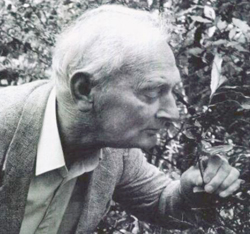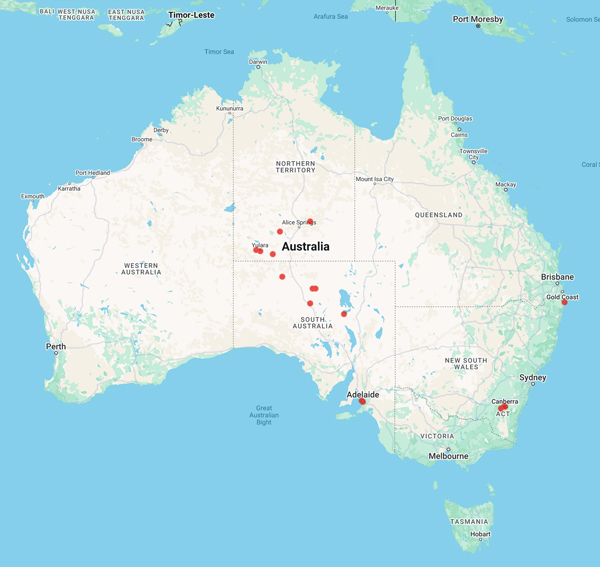
Council of Heads of Australasian Herbaria
Australian National Herbarium
Biographical Notes
 |
Council of Heads of Australasian Herbaria |
 Martin, Peter Gordon (1923 - 1994)
Martin, Peter Gordon (1923 - 1994)Born on 20 June 1923 in North Adelaide; died of cancer on 15 December 1994 in Adelaide, SA.
He was the only son of locally born parents Stanley Gordon Martin, bank clerk, and his wife Annie Violet, née De Rose.
Following the outbreak of World War II, he joined the Permanent Naval Forces as a special-entry cadet midshipman.
He served in the South Atlantic, Indian, and Pacific oceans, resigning to pursue a career in science on 22 July 1948.
In 1946 in the Adelaide Martin had married Beryl Laura Maud Thomas, an artist who had served in the Women's Auxiliary Australian Air Force.
Resuming his education, he studied botany and genetics at the University of Adelaide (BSc, 1953; PhD, 1957).
Appointed lecturer in 1956, he spent his entire academic career at the university. His encouragement of others was exceptional and for many years he taught first-year biology, insisting that only the 'best lectures' can properly introduce students to the subject. Rising through the academic hierarchy, he was made professor of botany in 1969.
As a scientist Martin was an enthusiastic proponent of the geophysicist Alfred Wegener's hypothesis of continental drift. This led to a collaboration with the geneticist David Hayman on the chromosomes and chromosomal evolution in marsupials which indicated that Australian and South American marsupials had a common Gondwanan origin. Many of the scholars who subsequently helped to make Australia pre-eminent in the field of marsupial evolution were either taught or influenced by Martin or Hayman.
An early member of the Nature Conservation Society of South Australia, Martin was a keen gardener and an enthusiast for native plants.
He always encouraged his family's interests, and his most-cited paper remains one in which he assisted his son Nick, a geneticist, in a study of intellectual ability in human twins. His daughter Mandy is a prominent artist and conservation advocate.
Source: Extracted from: https://adb.anu.edu.au/biography/martin-peter-gordon-18995
Portrait Photo: above article
Data from 63 specimens
